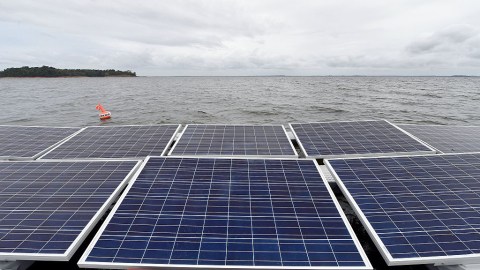Could Floating Solar Panels Become the New Normal?

It’s no secret that some of our current sources of energy aren’t going to be around forever, which is why renewable energy has become a hot topic over the past several decades. From movie theaters to farms, more and more places are turning to solar panels in particular to help the save on energy costs and to become more environmentally-friendly. Now, it looks like solar panels could start to get used in a new way. How about putting them over water?
At the Yamakura Dam reservoir in Japan, officials plan to build more than 50,000 solar panels that will float on top of the water. It’s projected that the resulting energy capture will provide enough power for 5,000 homes, and it will become the largest array of such solar devices anywhere in the world. However, similar setups are already planned or in place in Jamestown, Australia and Sonoma County, California, among other locations.
The idea isn’t as crazy as it sounds; there’s actually some good reasons for pursuing floating solar panels. First of all, space constraints can be an issue on land, since solar panels need a lot of room to be spread out. Given that people are also interested in building things like housing, schools, and workplaces on land, there’s only so much space leftover for energy collection. Secondly, floating solar panels can help prevent water evaporation from reservoirs in drought-ridden areas, such as California. To prevent excess evaporation and gain vital energy at the same time seems quite efficient. And thus far, it looks as though there isn’t a big recorded impact on wildlife.
Solar panels work by by collecting the energy released when sunlight hits an atom and its electron breaks free, moving around inside a crystal structure. However, solar cells have to be strung together, since each one only creates a little bit of energy. Solar panels can be expensive to install be cost efficient after several years.
—
Header Image: EVARISTO SA / Staff





